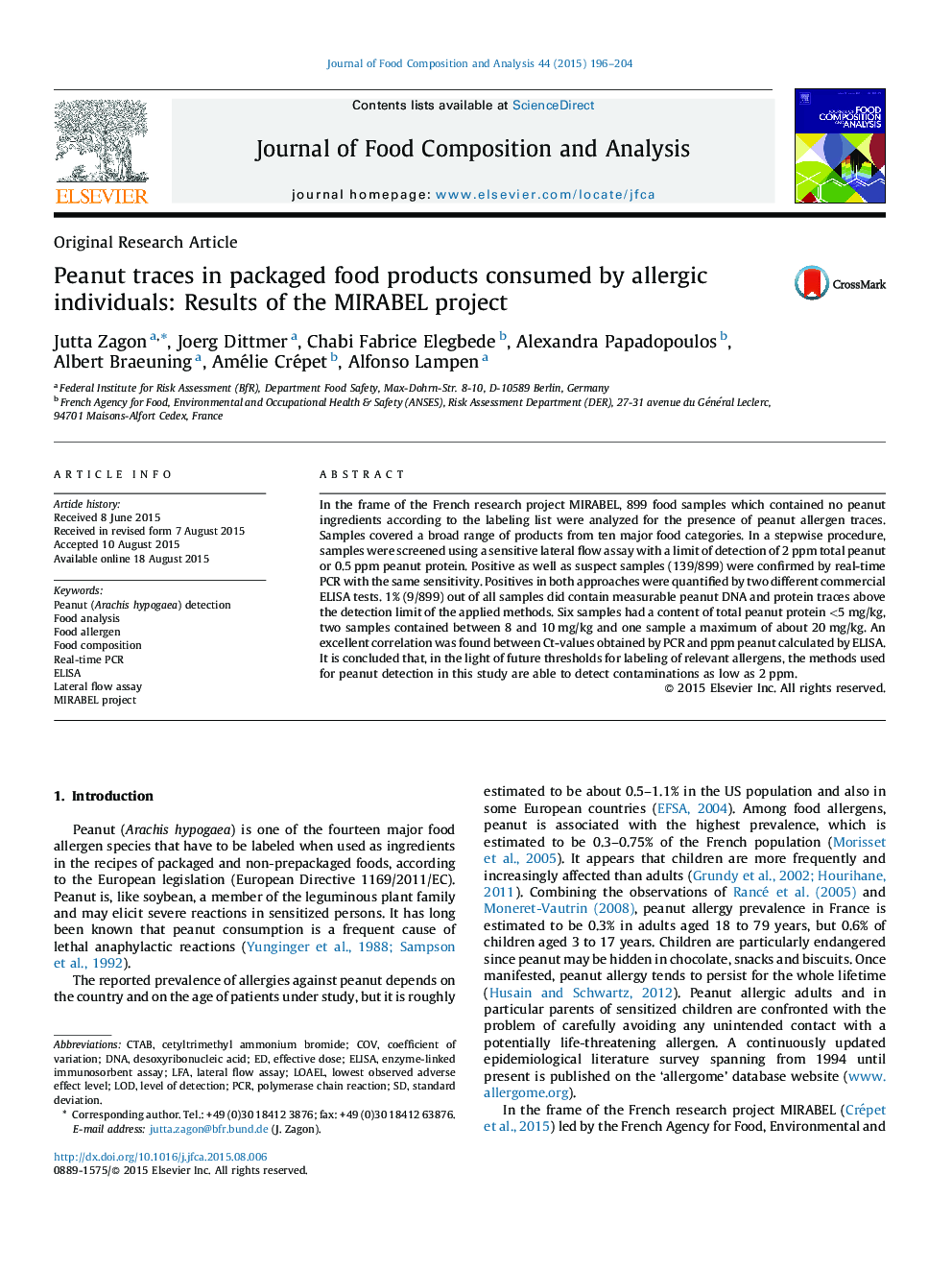| Article ID | Journal | Published Year | Pages | File Type |
|---|---|---|---|---|
| 7620385 | Journal of Food Composition and Analysis | 2015 | 9 Pages |
Abstract
In the frame of the French research project MIRABEL, 899 food samples which contained no peanut ingredients according to the labeling list were analyzed for the presence of peanut allergen traces. Samples covered a broad range of products from ten major food categories. In a stepwise procedure, samples were screened using a sensitive lateral flow assay with a limit of detection of 2Â ppm total peanut or 0.5Â ppm peanut protein. Positive as well as suspect samples (139/899) were confirmed by real-time PCR with the same sensitivity. Positives in both approaches were quantified by two different commercial ELISA tests. 1% (9/899) out of all samples did contain measurable peanut DNA and protein traces above the detection limit of the applied methods. Six samples had a content of total peanut protein <5Â mg/kg, two samples contained between 8 and 10Â mg/kg and one sample a maximum of about 20Â mg/kg. An excellent correlation was found between Ct-values obtained by PCR and ppm peanut calculated by ELISA. It is concluded that, in the light of future thresholds for labeling of relevant allergens, the methods used for peanut detection in this study are able to detect contaminations as low as 2Â ppm.
Keywords
CTABLOAELLFADNAReal-time PCRCOVLateral flow assayFood allergenCetyltrimethyl ammonium bromidedesoxyribonucleic acidstandard deviationFood analysisFood compositionELISAEnzyme-linked immunosorbent assayLOD یا Limit of detectionEffective doselevel of detectionCoefficient of Variationpolymerase chain reactionPCRLowest observed adverse effect level
Related Topics
Physical Sciences and Engineering
Chemistry
Analytical Chemistry
Authors
Jutta Zagon, Joerg Dittmer, Chabi Fabrice Elegbede, Alexandra Papadopoulos, Albert Braeuning, Amélie Crépet, Alfonso Lampen,
